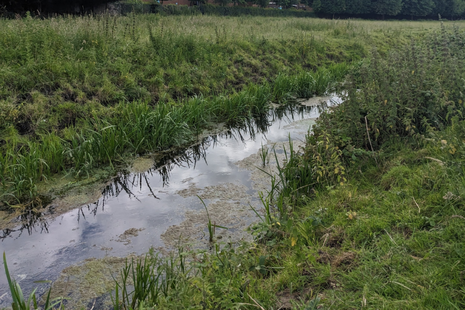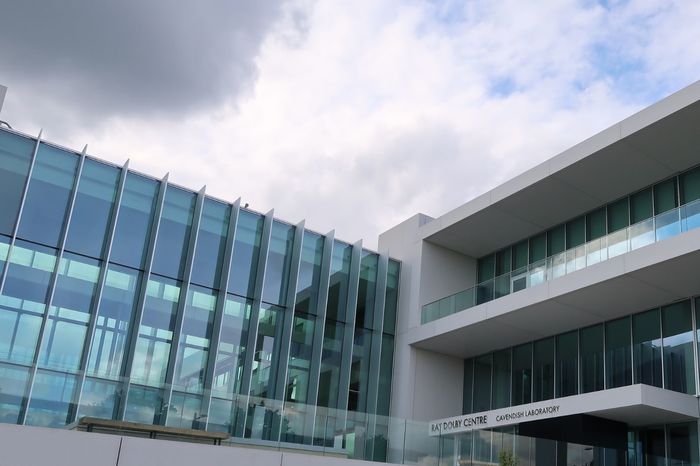Cambridge’s chalk streams are under threat, and that’s a problem
Nick James investigates the state of Cambridge’s all too easily forgotten chalk streams and the impact of their deteriorating quality

“They’re as rare as the rainforest.” This is how one person described the chalk streams that run through Cambridge: crystal-clear streams that are home to a remarkable amount of biodiversity. Chalk streams are fed from underground water and rise through chalk bedrock, creating filtered, fresh and nutrient-rich water. 85% of the world’s chalk streams are found in England, and these ecosystems are home to water crowfoot, wild trout, kingfishers, bats and otters, as well as helping to supply us with good quality water.
However, the chalk streams that run through Cambridge are under significant strain. According to environmental reports, 75% of England’s chalk streams are in poor condition. While many Cambridge students may be unaware of the difficulties these unique ecosystems face, their collapse could pose significant environmental and social challenges.
To understand the scope of Cambridge’s water problem, I spoke to Tony Eva, a local environmental campaigner who has recently produced a documentary called Pure Clean Water. The film investigates Cambridge’s unique chalk streams, as well as the problems they are facing.
“The rate of abstraction is rising, and shows no sign of slowing down”
According to Eva, the main problem is that Cambridge water companies are abstracting too much from the underground chalk aquifers. At an abstraction rate of about 84 million litres a day, or the volume of 33 Olympic-sized swimming pools, the aquifers which charge the streams are running dry. Worse still, the rate of abstraction is rising, and shows no sign of slowing down.
This is for two main reasons. First, it’s because “Cambridge is growing particularly quickly at the moment,” as Eva explained, due to an influx of life-science investment and government plans to ‘level up’ the city. These plans include the construction of new data centres, labs and 150,000 new homes, which “would see [Cambridge] grow at a rate which is almost unimaginable to most people.” Secondly, individuals are using more water: in the southeast of England, daily average water consumption has risen from 140 litres per person pre-Covid to 150 litres post-Covid.
The problem posed by an increase in water demand is compounded by the fact that climate change means Cambridge is now seeing increasingly stuck weather patterns. While last year saw some of the driest months on record, this year is seeing some of the wettest. Eva explained that these more extreme weather patterns make it harder to predict the level of water Cambridge will have access to, and that the stuck patterns “are increasingly loading the dice in terms of the risk of dry winters increasing.”
All this means that Cambridge’s chalk streams are under increasing strain which is leading to more bare and barren stream beds. This not only has an ecological and biodiversity cost, but also has a significant impact on the water quality in Cambridge.
“Cambridge faces a particular challenge with its water quality because of its rapid population and industrial growth”
Like many other cities across England, Cambridge has seen a deterioration in the quality of its water. This hasn’t gone unnoticed by Cambridge’s rowers and wild swimmers, many of whom gave me some shocking anecdotes about the state they’d seen the river in. One told me about the time the stench was so bad, they were violently ill for the rest of the day, while another mentioned a time when the once clear water they rowed in was now completely brown. According to Eva, Cambridge faces a particular challenge with its water quality because of its rapid population and industrial growth: “On the Cam catchment, there are a number of older sewage treatment plants, which even when they’re operating at normal capacity, will not produce such clean water. And unfortunately, their capacity has been overwhelmed by the number of new homes that have been added, so that means that they are discharging raw sewage.”
He added that this problem has been significantly worsened by the fact that chalk streams, known for their pure water, are drying up: “Because the chalk springs and streams don’t have the power that they used to, it means that the water coming out of sewage treatment plants which is of ‘acceptable’ quality should be diluted by lots of spring water, but when the springs and streams don’t have any power in them, it means that there’s very little of that that’s diluted, and so you have a much increased concentration of pollutants in the Cam.”
The scope of the challenge is large, and if little is done about it, the dire state of Cambridge’s chalk streams could lead to serious environmental and social consequences. Eva told me that “we all have a role to play” in reducing our water consumption to save the chalk streams, and that “we need massive changes to the way that water is supplied to us in this part of the country.”
In response to this challenge, South Staffs and Cambridge Water have petitioned for £12 million from the government to restore seven chalk streams in Cambridge. The projects will focus on improving biodiversity, as well as improving water quality and quantity around chalk streams.
These projects are a promising sign that the future of Cambridge’s chalk streams are not yet lost, but it won’t all be plain sailing: “We don’t really know what we are trying to restore them to because they’ve been messed around with so much,” Sarah Sanderson, Catchment Projects Officer for Cambridge Water, told me. Despite this, Sanderson is optimistic about the success of the project and hopes that the scheme will help improve public perception of the water company: “Obviously we are ‘the evil water company’, I understand, and it is partly us that are messing up the chalk streams, but we are doing a lot to sort it.”
While these regeneration projects and a lowering of individual water consumption may go a long way in improving the condition of Cambridge’s chalk streams, the deciding factor on their fate will inevitably come down to the rate of development in the city. The environmental agency has already raised concerns on the construction of 9,000 homes and 300,000 square feet of lab space in Cambridge due to the water stress it will bring. But last April, housing and levelling up secretary Michael Gove approved many Cambridge development schemes including Cambridge North and the Cancer Research Hospital despite the environmental concerns. It has been determined that the benefits outweigh the risks for these developments and that new water strategies can be put in place to maintain water security.
But not everyone agrees: Cambridge’s current pace of development cannot continue forever, and at some point something will have to give. As Eva told me: “The point will come when the planning authorities will not be able to say […] ‘Okay we reluctantly decide on balance that this planning application should go ahead because of the positives that it could bring.’”
To save these ecosystems that are as rare as the rainforest, we have to ensure that we all play our part in reducing water consumption and guaranteeing that the development happening in Cambridge is done sustainably. Otherwise, we could lose out on the social and environmental benefits these beautiful chalk streams bring.
 Comment / Plastic pubs: the problem with Cambridge alehouses 5 January 2026
Comment / Plastic pubs: the problem with Cambridge alehouses 5 January 2026 News / Cambridge businesses concerned infrastructure delays will hurt growth5 January 2026
News / Cambridge businesses concerned infrastructure delays will hurt growth5 January 2026 News / New movement ‘Cambridge is Chopped’ launched to fight against hate crime7 January 2026
News / New movement ‘Cambridge is Chopped’ launched to fight against hate crime7 January 2026 News / AstraZeneca sues for £32 million over faulty construction at Cambridge Campus31 December 2025
News / AstraZeneca sues for £32 million over faulty construction at Cambridge Campus31 December 2025 Interviews / You don’t need to peak at Cambridge, says Robin Harding31 December 2025
Interviews / You don’t need to peak at Cambridge, says Robin Harding31 December 2025










